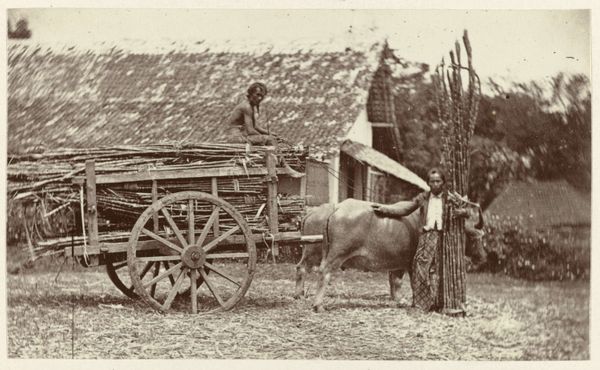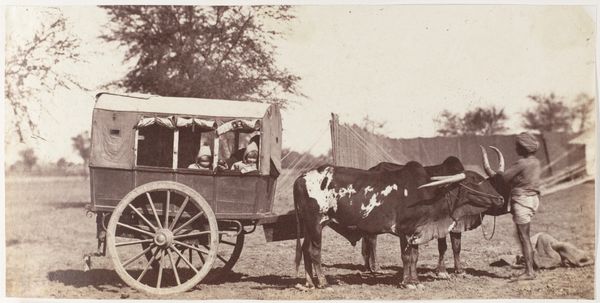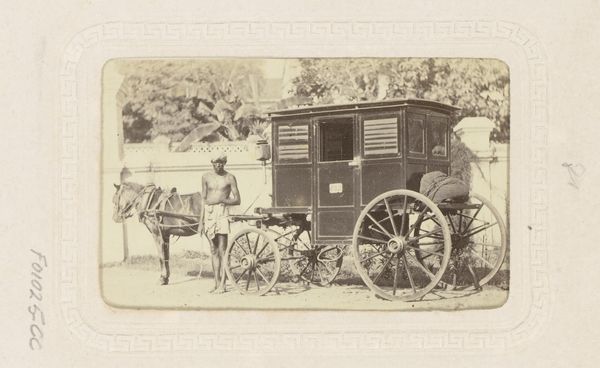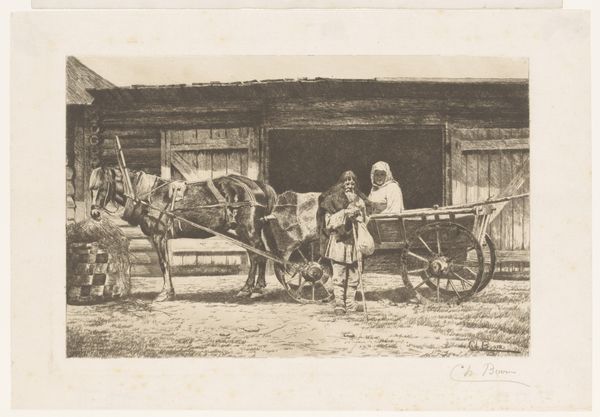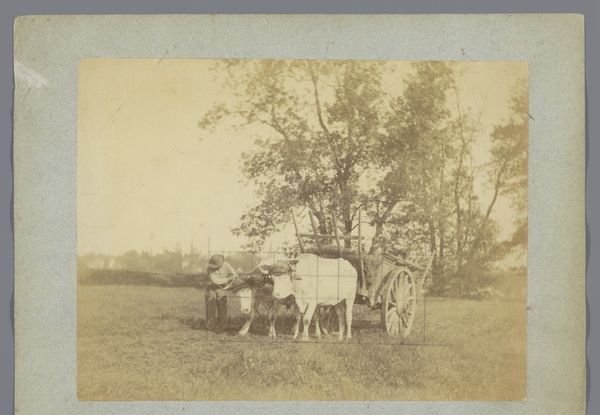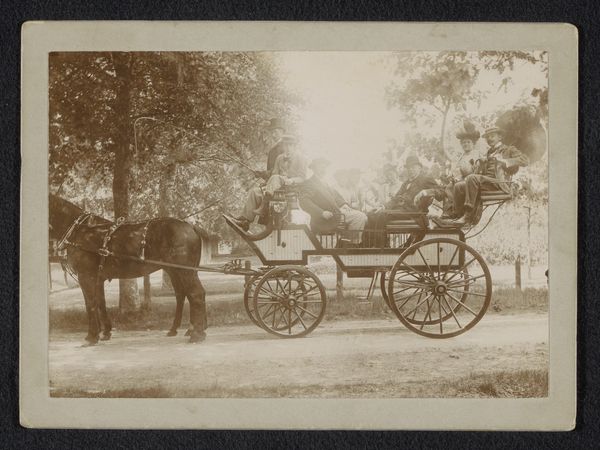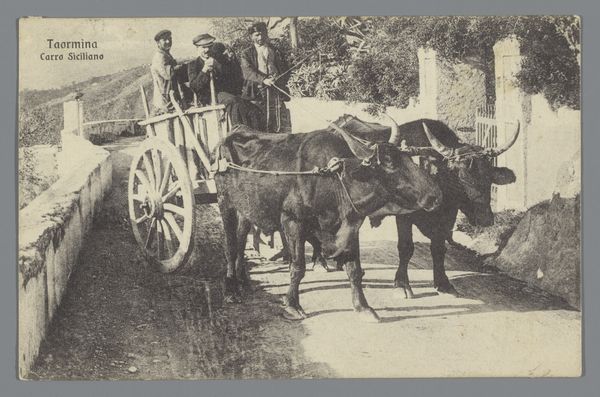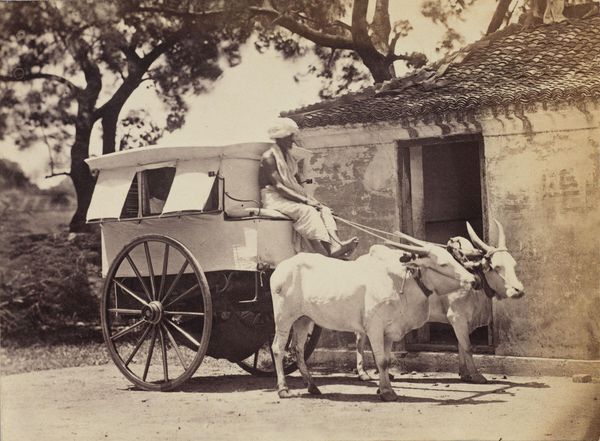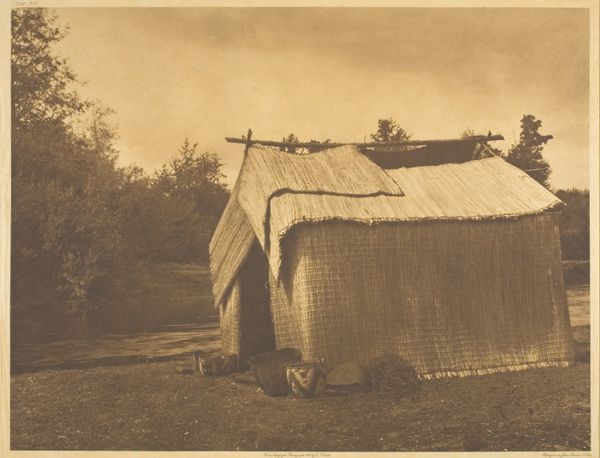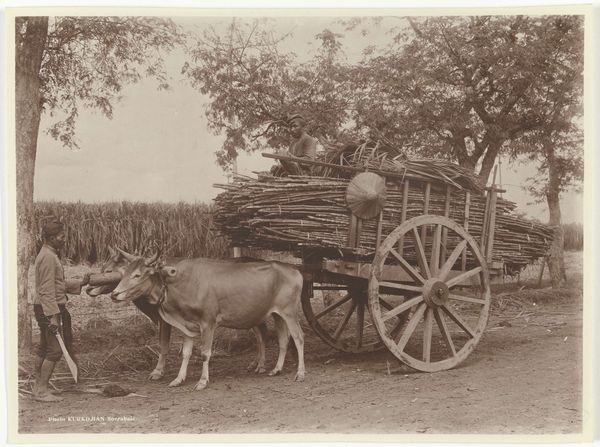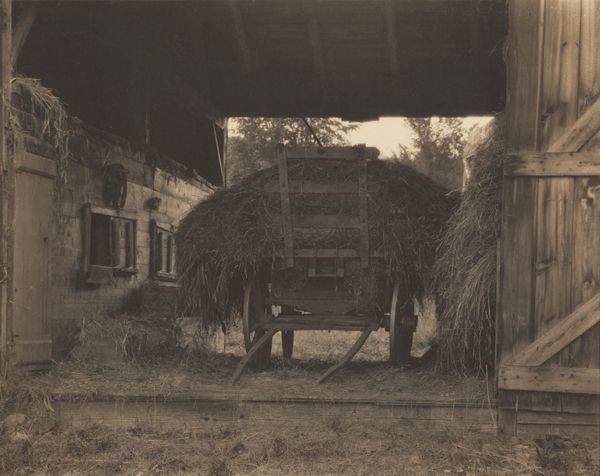
Een overdekte kar voorgetrokken door een karbouw 1891 - 1912
0:00
0:00
christiaanbenjaminnieuwenhuis
Rijksmuseum
albumen-print, photography, albumen-print
#
albumen-print
#
asian-art
#
landscape
#
archive photography
#
photography
#
historical photography
#
albumen-print
Dimensions: height 215 mm, width 287 mm
Copyright: Rijks Museum: Open Domain
Editor: So, this is "Een overdekte kar voorgetrokken door een karbouw," a photograph, an albumen print to be precise, by Christiaan Benjamin Nieuwenhuis, dated between 1891 and 1912. It’s very serene, almost dreamlike in its stillness. What stands out to you when you look at this piece? Curator: I see a layered commentary on colonialism and representation. This image isn't just a snapshot of Indonesian life; it's a carefully constructed narrative presented through a Western lens. What's highlighted, and what is conspicuously left out? How might the photographer's background and the prevailing social power structures of the time have influenced its creation? Consider how this image was produced, consumed, and interpreted then, versus how we might interpret it now through a postcolonial perspective. Editor: That's fascinating. I hadn’t considered the power dynamics involved in documenting another culture. Do you think the subjects have any agency here? Curator: That's the key question, isn’t it? The subjects appear posed, almost staged, which raises questions of authenticity. Were they compensated? Did they understand how their images would be used? These images were often circulated as exotic souvenirs, reinforcing stereotypes. So, agency becomes a complex issue, intertwined with exploitation and cultural appropriation. How can we view this photograph ethically in our contemporary society? Editor: It really shifts my perspective. I initially saw a tranquil scene, but now I’m aware of so many other layers. Curator: Exactly! By questioning the image's creation and its impact, we begin to dismantle the romanticized, often biased, narratives perpetuated by early photography. It encourages a critical engagement with historical imagery and helps us to be more responsible viewers. Editor: Thank you. It gives me a lot to think about, understanding historical context is truly crucial when interpreting art. Curator: Absolutely. And understanding context enables us to advocate for more equitable and informed representations.
Comments
No comments
Be the first to comment and join the conversation on the ultimate creative platform.

